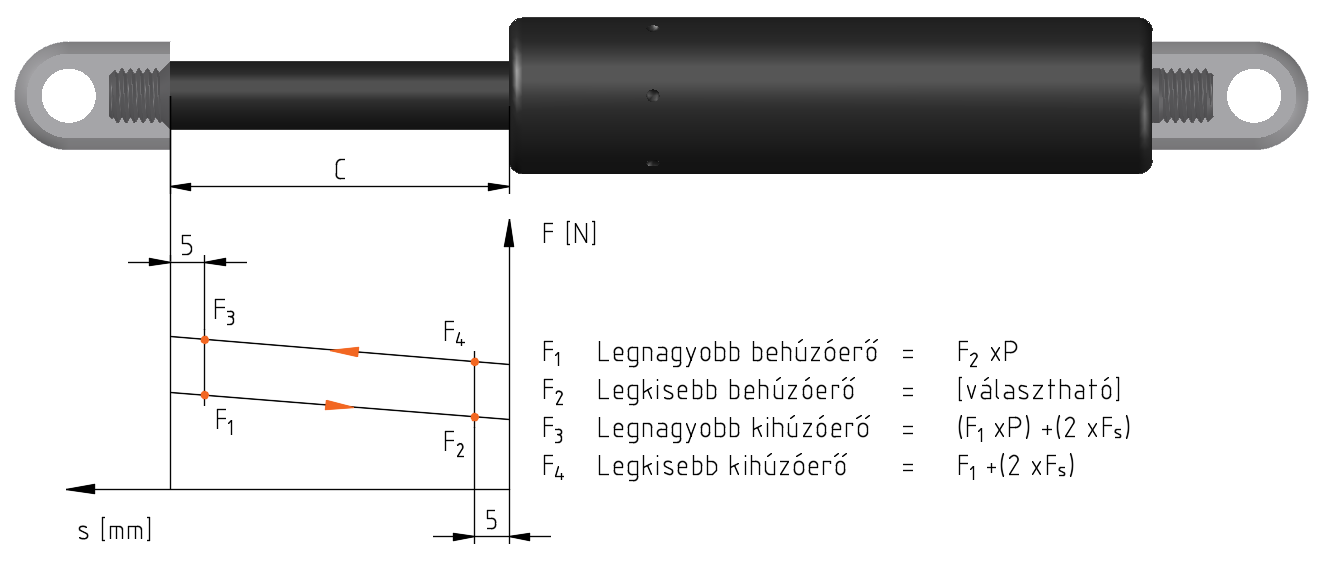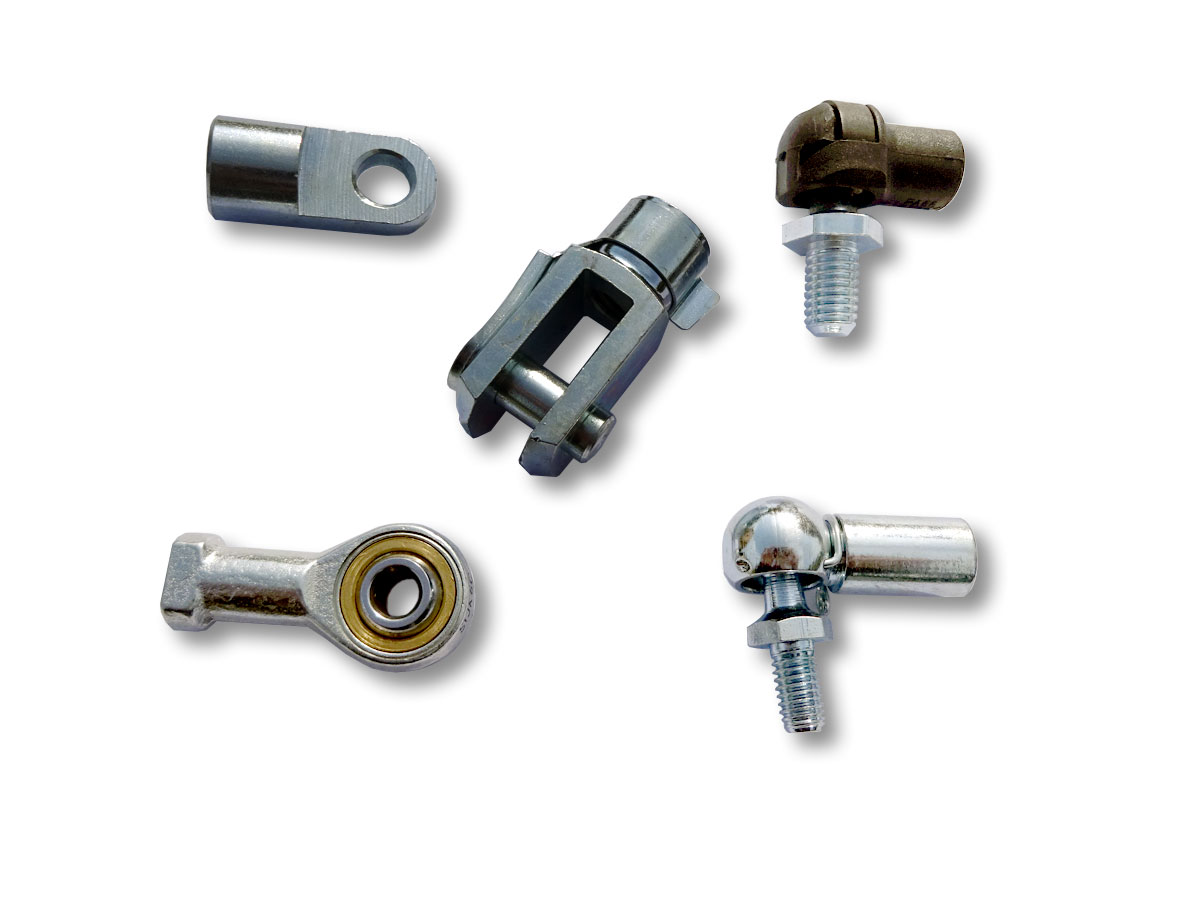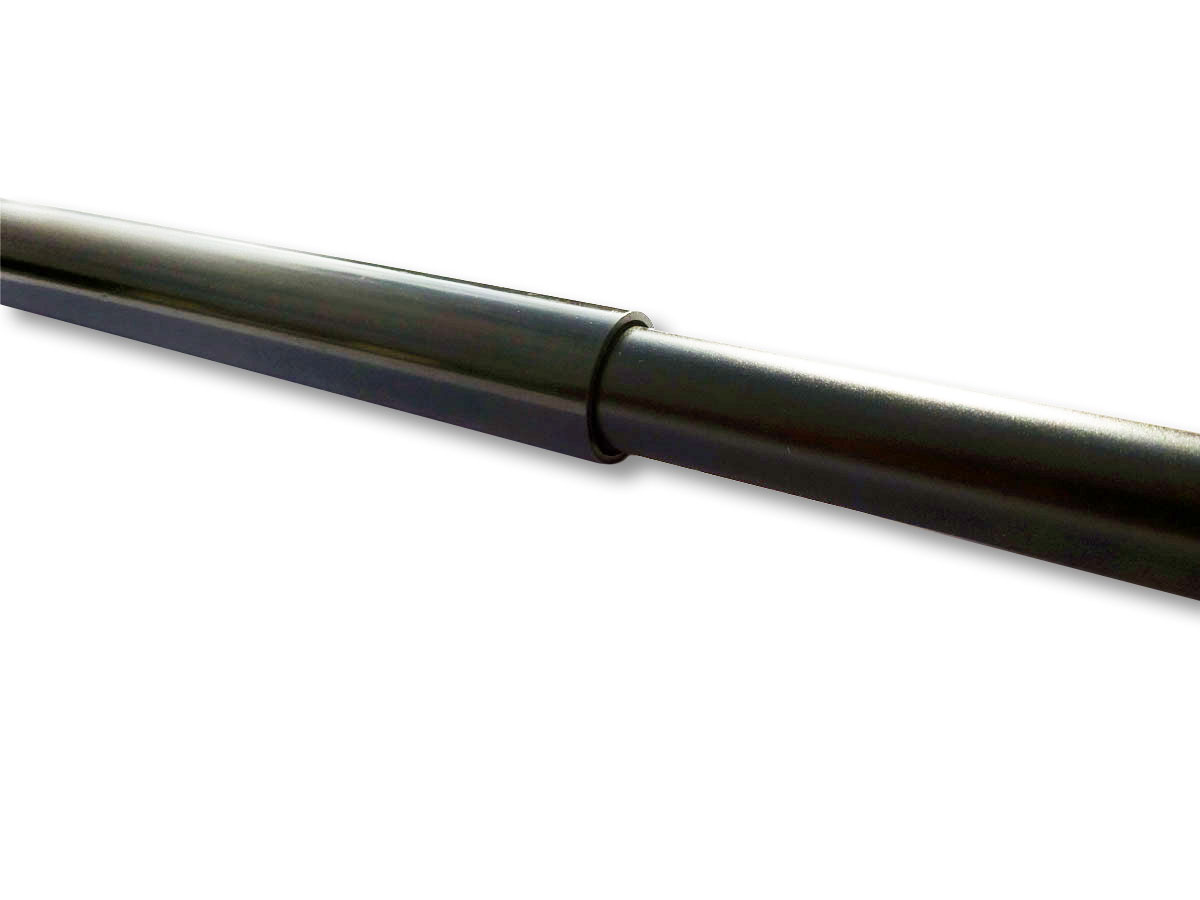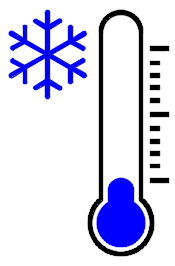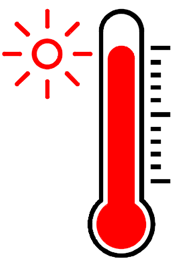Traction gas springs
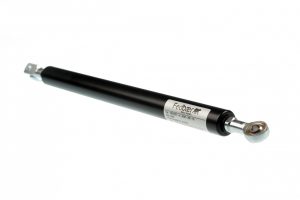 Less known but widely used telescope type. Pulling, reverse operation, etc. names are also cover this type. Normally closed, it’s needs force to be pulled off. It runs continuosly from end to end position, restores reset without load.
Less known but widely used telescope type. Pulling, reverse operation, etc. names are also cover this type. Normally closed, it’s needs force to be pulled off. It runs continuosly from end to end position, restores reset without load.
Size range:
Within the range shown in the table below, we produce traction gas springs , even in individual sizes.
The ends of the gas springs are threaded in principle, but can be chosen from a large variety of end fittings as required.
| Type | A | B | C | D | E |
|---|---|---|---|---|---|
| Rod Ø [mm] | Cylinder Ø [mm] | Stroke [mm] | Basic lenght calculation [mm] | Extended lenght calculation [mm] | |
| FBD06/18 | 6 | 18 | 20 – 300 | (C x2) +65 | (C x2) +65 +G +H |
| FBD08/22 | 8 | 22 | 25 – 400 | (C x2) +70 | (C x2) +70 +G +H |
| FBD10/27 | 10 | 27 | 25 – 500 | (C x2) +75 | (C x2) +75 +G +H |
| FBD14/40 | 14 | 40 | 50 – 800 | (C x2) +95 | (C x2) +95 +G +H |
The value of G and H are different for each fitting type.
Force characteristics and dampering::
The force of the compression gas spring is not constant, depending on the position of the piston rod and the direction of movement. The force is required for extension is always greater than the compression froce of the gas spring.
Of the 4 different forces, only one can be definite, preferably the the smallest thrust, F2. This force is called as the force of the gas spring, this is indicated on the nameplate. The F1, F3, F4 force are indicative, may differ from the theoretical values. The force of the gas spring can be affacted by the ambient temperature. When fabricated, the F2 is measured at 20±2 °C. With the change of the temperature, the force change rate is about 3,3% for every 10 °C deviation.
| Type | P | Fs max | F2 | Lehetséges csillapítások | |||
|---|---|---|---|---|---|---|---|
| Progression | Friction force max [N]. | Smallest traction [N] | Extension | Compression | Both direction | Without dampering | |
| FBD06/18 | 1,20 | 30 | 30 – 400 | – | – | – | X |
| FBD08/22 | 1,30 | 35 | 50 – 800 | – | – | – | X |
| FBD10/27 | 1,65 | 40 | 50 – 1200 | – | – | – | X |
| FBD14/40 | 1,75 | 50 | 250 – 2500 | – | – | – | X |
During the damping of the gas springs, it is the stroke end damping, braking can be mean, which is slows down the speed of movement before reaching the entire open and/or closed lenght, thus saving the structure and the telescope. The traction gas springs can be ordered without dampering only, due to their internal structure.
Function and structure:
The traction gas spring is a cylinder filled with high pressure nitrogen. Its opetaring principle is largely the same as compression gas spring, but due to reverse direction of movement, ther are two separate cylinders in it.
Parts of traction gas springs:
1, End fitting 2, Piston rod 3, Guiding element 4, Sear 5, Spacer 6, Cylinder 7, Auxiliary cylinder 8, Gas and lubrication 9, Piston.
Application:
Replace steel springs, or an application where there is a lack of space to use compression gas springs.
Versions
The Fedbaer gas springs can be ordered with the following appearances and materials
Fedbaer Basic series
Standard version, black rod and tube
Fedbaer Silver series
Chrome plated rod, silver metallic tube
Fedbaer Inox series
Stainless steel rod and tube
Accessories
Accessories for Fedbaer gas springs
End fittings
List of optional fittings
Protective cover
Protect the rod from damage
Operating temperature
The Fedbar gas springs can be ordered for the following temperature conditions:


